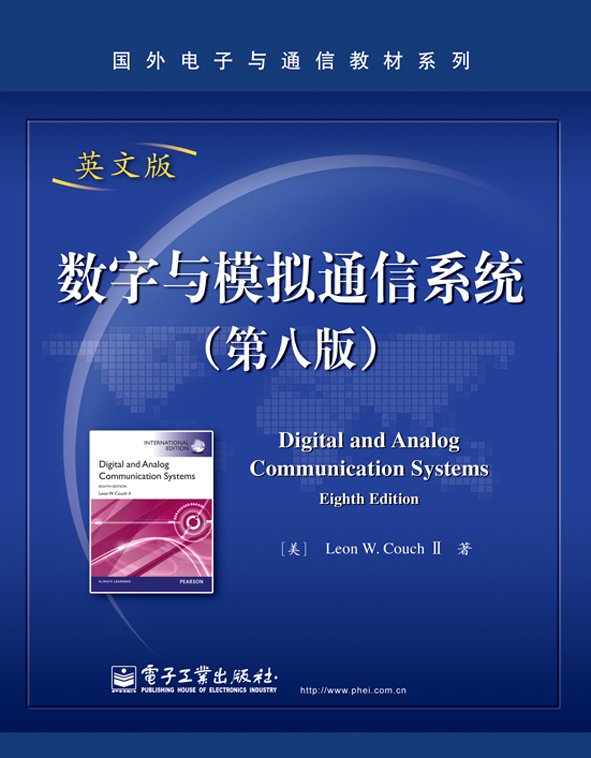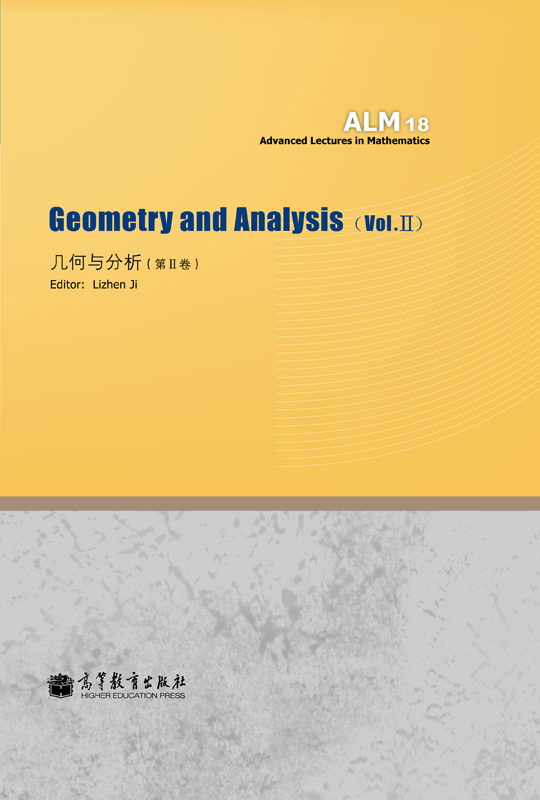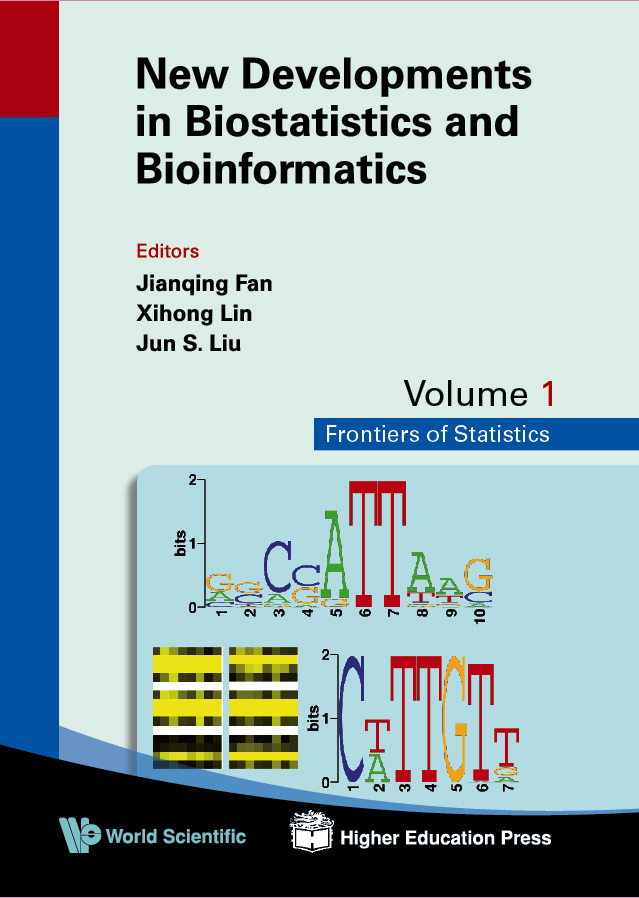- 电子工业出版社
- 9787121200304
- 1-1
- 350285
- 16开
- 2014-04
- 788
- 通信工程
- 本科 研究生(硕士、EMBA、MBA、MPA、博士)
内容简介
本书可供英文原版教辅:习题解答,PPT;教辅申请咨询Email:Te_service@。
本书在前七版的基础上进行了修订与更新,系统介绍了现代通信系统的基本理论和最新发展技术。全书共分8章,内容包括:通信系统的基本概念;信号与频谱;基带脉冲与数字信号;带通信号传输原理与电路;调幅、 调频及数字调制系统;随机过程与频谱分析;噪声背景下通信系统的性能;有线及无线通信系统。每章都有一定的助学例题及大量的习题,部分例题及习题另配有 MATLAB 文件。此外,本书还包含 3 个附录:数学基本公式及图表;概率论及随机变量的简易教程;MATLAB 入门。此次新版中更新了所有 MATLAB 文件,新增了 100多道例题并给出了更多的习题答案。本书还给出了数字电视(DTV)技术、长期演进(LTE)系统、WiMAX 4G 蜂窝系统、个人通信系统及其应用等内容的介绍。
本书在前七版的基础上进行了修订与更新,系统介绍了现代通信系统的基本理论和最新发展技术。全书共分8章,内容包括:通信系统的基本概念;信号与频谱;基带脉冲与数字信号;带通信号传输原理与电路;调幅、 调频及数字调制系统;随机过程与频谱分析;噪声背景下通信系统的性能;有线及无线通信系统。每章都有一定的助学例题及大量的习题,部分例题及习题另配有 MATLAB 文件。此外,本书还包含 3 个附录:数学基本公式及图表;概率论及随机变量的简易教程;MATLAB 入门。此次新版中更新了所有 MATLAB 文件,新增了 100多道例题并给出了更多的习题答案。本书还给出了数字电视(DTV)技术、长期演进(LTE)系统、WiMAX 4G 蜂窝系统、个人通信系统及其应用等内容的介绍。
目录
1INTRODUCTION 1–1 Historical Perspective
1–2 Digital and Analog Sources and Systems
1–3 Deterministic and Random Waveforms
1–4 Organization of the Book
1–5 Use of a Personal Computer and MATLAB
1–6 Block Diagram of a Communication System
1–7 Frequency Allocations
1–8 Propagation of Electromagnetic Waves
1–9 Information Measure
1–10 Channel Capacity and Ideal Communication Systems
1–11 Coding
1–12 Preview
1–13 Study-Aid Examples
Problems
2SIGNALS AND SPECTRA
2–1 Properties of Signals and Noise
2–2 Fourier Transform and Spectra
2–3 Power Spectral Density and Autocorrelation Function
2–4 Orthogonal Series Representation of Signals and Noise
2–5 Fourier Series
2–6 Review of Linear Systems
2–7 Bandlimited Signals and Noise
2–8 Discrete Fourier Transform
2–9 Bandwidth of Signals
2–10 Summary
2–11 Study-Aid Examples
Problems
3BASEBAND PULSE AND DIGITAL SIGNALING
3–1 Introduction
3–2 Pulse Amplitude Modulation
3–3 Pulse Code Modulation
3–4 Digital Signaling
3–5 Line Codes and Spectra
3–6 Intersymbol Interference
3–7 Differential Pulse Code Modulation
3–8 Delta Modulation
3–9 Time-Division Multiplexing
3–10 Packet Transmission System
3–11 Pulse Time Modulation: Pulse Width Modulation and Pulse Position Modulation
3–12 Summary
3–13 Study-Aid Examples
Problems
4BANDPASS SIGNALING PRINCIPLES AND CIRCUITS
4–1 Complex Envelope Representation of Bandpass Waveforms
4–2 Representation of Modulated Signals
4–3 Spectrum of Bandpass Signals
4–4 Evaluation of Power
4–5 Bandpass Filtering and Linear Distortion
4–6 Bandpass Sampling Theorem
4–7 Received Signal Plus Noise
4–8 Classification of Filters and Amplifiers
4–9 Nonlinear Distortion
4–10 Limiters
4–11 Mixers, Up Converters, and Down Converters
4–12 Frequency
4–19 Study-Aid Examples
Problems
5AM, FM, AND DIGITAL MODULATED SYSTEMS
5–1 Amplitude Modulation
5–2 AM Broadcast Technical Standards and Digital AM Broadcasting
5–3 Double-Sideband Suppressed Carrier
5–4 Costas Loop and Squaring Loop
5–5 Asymmetric Sideband Signals
5–6 Phase Modulation and Frequency Modulation
5–7 Frequency-Division Multiplexing and FM Stereo
5–8 FM Broadcast Technical Standards and Digital FM Broadcasting
5–9 Binary Modulated Bandpass Signaling
5–10 Multilevel Modulated Bandpass Signaling
5–11 Minimum-Shift Keying and GMSK
5–12 Orthogonal Frequency Division Multiplexing (OFDM)
5–13 Spread Spectrum Systems
5–14 Summary
5–15 Study-Aid Examples
Problems
6RANDOM PROCESSES AND SPECTRAL ANALYSIS
6–1 Some Basic Definitions
6–2 Power Spectral Density
6–3 DC and RMS Values for Ergodic Random Processes
6–4 Linear Systems
6–5 Bandwidth Measures
6–6 The Gaussian Random Process
6–7 Bandpass Processes
6–8 Matched Filters
6–9 Summary
6–10 Appendix: Proof of Schwarz’s Inequality
6–11 Study-Aid Examples
Problems
7 PERFORMANCE OF COMMUNICATION SYSTEMS CORRUPTED BY NOISE
7–1 Error Probabilities for Binary Signaling
7–2 Performance of Baseband Binary Systems
7–3 Coherent Detection of Bandpass Binary Signals
7–4 Noncoherent Detection of Bandpass Binary Signals
7–5 Quadrature Phase-Shift Keying and Minimum-Shift Keying
7–6 Comparison of Digital Signaling Systems
7–7 Output Signal-to-Noise Ratio for PCM Systems
7–8 Output Signal-to-Noise Ratios for Analog Systems
7–9 Comparison of Analog Signaling Systems
7–10 Summary
7–11 Study-Aid Examples
Problems
8 WIRE AND WIRELESS COMMUNICATION APPLICATIONS
8–1 The Explosive Growth of Telecommunications
8–2 Telephone Systems
8–3 Digital Subscriber Lines (DSL)
8–4 Capacities of Public Switched Telephone Networks
8–5 Satellite Communication Systems
8–6 Link Budget Analysis
8–7 Fiber-Optic Systems
8–8 Cellular Telephone Systems
8–9 Television
8–10 Cable Data Modems
8–11 Wireless Data Networks
8–12 Summary
8–13 Study-Aid Examples
Problems
APPENDIX A MATHEMATICAL TECHNIQUES, IDENTITIES, AND TABLES
A–1 Trigonometry and Complex Numbers
A–2 Differential Calculus
A–3 Indeterminate Forms
A–4 Integral Calculus
A–5 Integral Tables
A–6 Series Expansions
A–7 Hilbert Transform Pairs
A–8 The Dirac Delta Function
A–9 Tabulation of Sa (x) = (sin x)x
A–10 Tabulation of Q (z)
APPENDIX BPROBABILITY AND RANDOM VARIABLES
B–1 Introduction
B–2 Sets
B–3 Probability and Relative Frequency
B–4 Random Variables
B–5 Cumulative Distribution Functions and Probability Density Functions
B–6 Ensemble Average and Moments
B–7 Examples of Important Distributions
B–8 Functional Transformations of Random Variables
B–9 Multivariate Statistics
Problems
APPENDIX C USING MATLAB
C–1 About the MATLAB M-Files
C–2 Quick Start for Running M-Files
C–3 Programming in MATLAB
REFERENCES
ANSWERS TO SELECTED PROBLEMS
INDEX
1–2 Digital and Analog Sources and Systems
1–3 Deterministic and Random Waveforms
1–4 Organization of the Book
1–5 Use of a Personal Computer and MATLAB
1–6 Block Diagram of a Communication System
1–7 Frequency Allocations
1–8 Propagation of Electromagnetic Waves
1–9 Information Measure
1–10 Channel Capacity and Ideal Communication Systems
1–11 Coding
1–12 Preview
1–13 Study-Aid Examples
Problems
2SIGNALS AND SPECTRA
2–1 Properties of Signals and Noise
2–2 Fourier Transform and Spectra
2–3 Power Spectral Density and Autocorrelation Function
2–4 Orthogonal Series Representation of Signals and Noise
2–5 Fourier Series
2–6 Review of Linear Systems
2–7 Bandlimited Signals and Noise
2–8 Discrete Fourier Transform
2–9 Bandwidth of Signals
2–10 Summary
2–11 Study-Aid Examples
Problems
3BASEBAND PULSE AND DIGITAL SIGNALING
3–1 Introduction
3–2 Pulse Amplitude Modulation
3–3 Pulse Code Modulation
3–4 Digital Signaling
3–5 Line Codes and Spectra
3–6 Intersymbol Interference
3–7 Differential Pulse Code Modulation
3–8 Delta Modulation
3–9 Time-Division Multiplexing
3–10 Packet Transmission System
3–11 Pulse Time Modulation: Pulse Width Modulation and Pulse Position Modulation
3–12 Summary
3–13 Study-Aid Examples
Problems
4BANDPASS SIGNALING PRINCIPLES AND CIRCUITS
4–1 Complex Envelope Representation of Bandpass Waveforms
4–2 Representation of Modulated Signals
4–3 Spectrum of Bandpass Signals
4–4 Evaluation of Power
4–5 Bandpass Filtering and Linear Distortion
4–6 Bandpass Sampling Theorem
4–7 Received Signal Plus Noise
4–8 Classification of Filters and Amplifiers
4–9 Nonlinear Distortion
4–10 Limiters
4–11 Mixers, Up Converters, and Down Converters
4–12 Frequency
4–19 Study-Aid Examples
Problems
5AM, FM, AND DIGITAL MODULATED SYSTEMS
5–1 Amplitude Modulation
5–2 AM Broadcast Technical Standards and Digital AM Broadcasting
5–3 Double-Sideband Suppressed Carrier
5–4 Costas Loop and Squaring Loop
5–5 Asymmetric Sideband Signals
5–6 Phase Modulation and Frequency Modulation
5–7 Frequency-Division Multiplexing and FM Stereo
5–8 FM Broadcast Technical Standards and Digital FM Broadcasting
5–9 Binary Modulated Bandpass Signaling
5–10 Multilevel Modulated Bandpass Signaling
5–11 Minimum-Shift Keying and GMSK
5–12 Orthogonal Frequency Division Multiplexing (OFDM)
5–13 Spread Spectrum Systems
5–14 Summary
5–15 Study-Aid Examples
Problems
6RANDOM PROCESSES AND SPECTRAL ANALYSIS
6–1 Some Basic Definitions
6–2 Power Spectral Density
6–3 DC and RMS Values for Ergodic Random Processes
6–4 Linear Systems
6–5 Bandwidth Measures
6–6 The Gaussian Random Process
6–7 Bandpass Processes
6–8 Matched Filters
6–9 Summary
6–10 Appendix: Proof of Schwarz’s Inequality
6–11 Study-Aid Examples
Problems
7 PERFORMANCE OF COMMUNICATION SYSTEMS CORRUPTED BY NOISE
7–1 Error Probabilities for Binary Signaling
7–2 Performance of Baseband Binary Systems
7–3 Coherent Detection of Bandpass Binary Signals
7–4 Noncoherent Detection of Bandpass Binary Signals
7–5 Quadrature Phase-Shift Keying and Minimum-Shift Keying
7–6 Comparison of Digital Signaling Systems
7–7 Output Signal-to-Noise Ratio for PCM Systems
7–8 Output Signal-to-Noise Ratios for Analog Systems
7–9 Comparison of Analog Signaling Systems
7–10 Summary
7–11 Study-Aid Examples
Problems
8 WIRE AND WIRELESS COMMUNICATION APPLICATIONS
8–1 The Explosive Growth of Telecommunications
8–2 Telephone Systems
8–3 Digital Subscriber Lines (DSL)
8–4 Capacities of Public Switched Telephone Networks
8–5 Satellite Communication Systems
8–6 Link Budget Analysis
8–7 Fiber-Optic Systems
8–8 Cellular Telephone Systems
8–9 Television
8–10 Cable Data Modems
8–11 Wireless Data Networks
8–12 Summary
8–13 Study-Aid Examples
Problems
APPENDIX A MATHEMATICAL TECHNIQUES, IDENTITIES, AND TABLES
A–1 Trigonometry and Complex Numbers
A–2 Differential Calculus
A–3 Indeterminate Forms
A–4 Integral Calculus
A–5 Integral Tables
A–6 Series Expansions
A–7 Hilbert Transform Pairs
A–8 The Dirac Delta Function
A–9 Tabulation of Sa (x) = (sin x)x
A–10 Tabulation of Q (z)
APPENDIX BPROBABILITY AND RANDOM VARIABLES
B–1 Introduction
B–2 Sets
B–3 Probability and Relative Frequency
B–4 Random Variables
B–5 Cumulative Distribution Functions and Probability Density Functions
B–6 Ensemble Average and Moments
B–7 Examples of Important Distributions
B–8 Functional Transformations of Random Variables
B–9 Multivariate Statistics
Problems
APPENDIX C USING MATLAB
C–1 About the MATLAB M-Files
C–2 Quick Start for Running M-Files
C–3 Programming in MATLAB
REFERENCES
ANSWERS TO SELECTED PROBLEMS
INDEX









